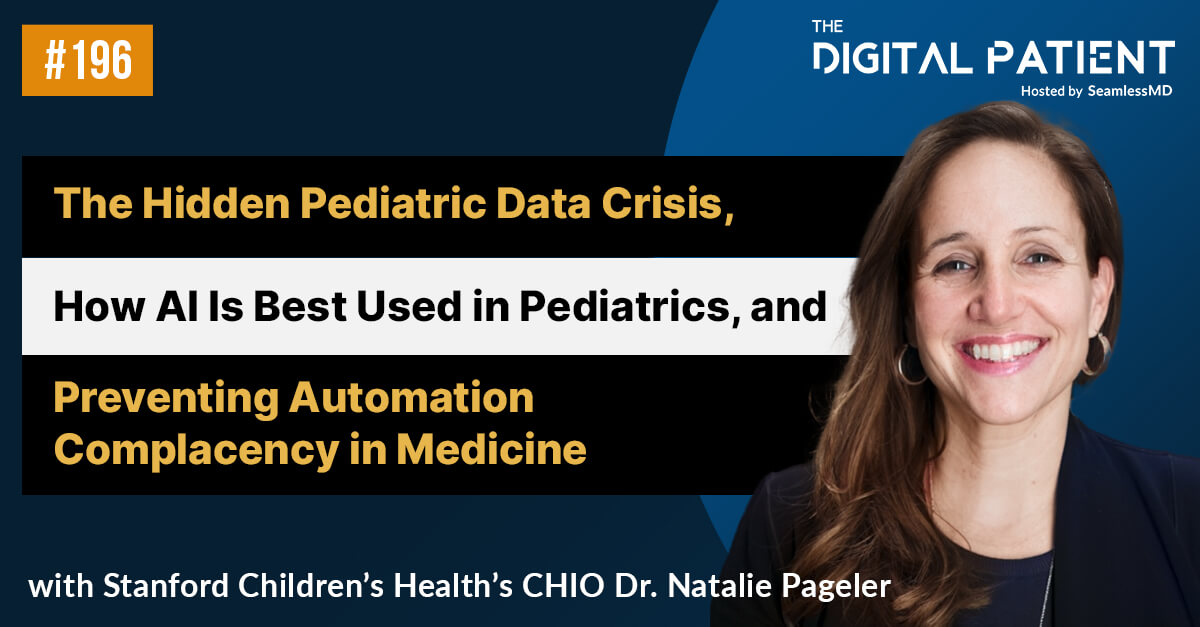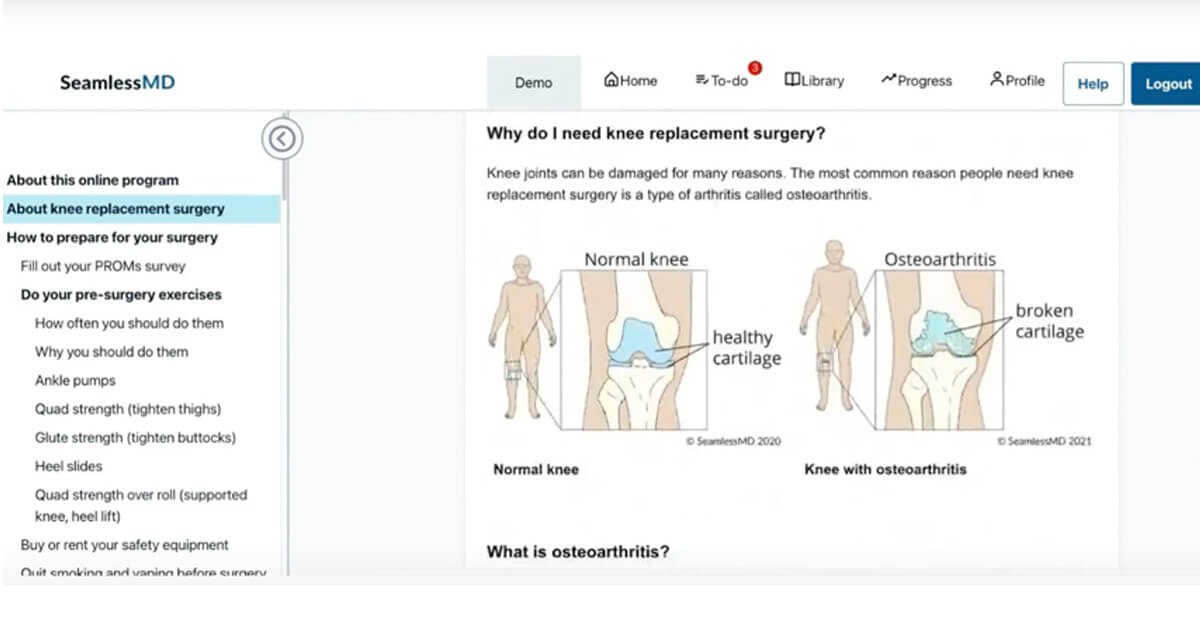Subscribe on: RSS | SPOTIFY | APPLE PODCAST | GOOGLE | BREAKER | ANCHOR
On this episode of "The Digital Patient" podcast, hosts Alan Sardana & Dr. Joshua Liu speak with Todd Dunn, Vice President of Innovation at Atrium Health, about "Building an Innovation System to Scale Impact Across a Health System, Conceptualizing a Multidimensional Consumer, and Painstorming Before Brainstorming". Click the play button to listen or read the show notes below.
Audio:
Video:
Guest(s):
- Todd Dunn (@ttodddunn), Vice President of Innovation at Atrium Health
- Dr. Joshua Liu (@joshuapliu), Co-founder & CEO at SeamlessMD
Episode 85 - Show Notes:
[00:00] Introducing Todd Dunn, Vice President of Innovation at Atrium Health;
[2:00] How Mr. Dunn got into innovation upon discovering an article in 2005 by Clayton M. Christensen, Scott Cook, and Taddy Hall, entitled Marketing Malpractice, which changed his views on operations, and through influences such as Roy Rosen, creator of Intuit’s Design for Delight program and innovator/entrpreneur, Steve Blank, whose influences shaped how Mr. Dunn thinks about the world;
[4:40] How Mr. Dunn was invited into the healthcare world by Intermountain Health’s Marc Probst (CIO) and Dr. Stanley Huff (CMIO) after spinning out a division at GE <> Microsoft centered around healthcare;
[7:20] Why Mr. Dunn believes the weakness of healthcare innovation is the lack of systems – that inform the language, tools, and methods of innovation – and how he sought to help implement innovation systems for leaders so they can renovate their own business models or create new ones as opposed to having smaller teams (ie Startups) come in and spark fires;
[9:30] How Mr. Dunn developed a checklist to build an alliance around the consumer, the customer, the company, and the problem, which allowed teams to move innovation from an interesting activity to one that scales – teaching observations, business modelling, jobs theory, etc.
[12:00] Why Mr. Dunn believes success is a race to win the customer and that if you embrace the status quo, someone else is winning, and how building a system that encourages innovation to be a capability of the many can have a profound impact on the business in contrast to a small team doing the work (which may impact a piece of the business);
[15:30] Why Mr. Dunn believes coaches appear when there are players willing to learn, and why he looks for resistance in his teams to understand factors driving friction, preventing innovation, which typically comes down to prioritization;
[18:50] Why Mr. Dunn believes innovation systems are more important in healthcare than other industries since almost all ideas in healthcare can be drilled down to a desire to help people, which, from empathy, makes it difficult to say no;
[20:40] How innovation systems are akin to the scientific method in that there are specific steps to take to understand the desirability, feasibility, and viability of a solution similar to asking questions to form hypotheses, and why innovation systems allow us to celebrate the impact of a solution as opposed to the brilliance of an idea;
[23:10] How Mr. Dunn views innovation at one hospital vs. a large system; specifically how a small hospitals can muscle innovation through with a single team, whereas larger systems need systems in place to teach innovation systems to others so that the impact can scale across the enterprise;
[26:15] How Mr. Dunn met with the late, great, Clayton Christensen to share one of his lightbulb moments recognizing how a person’s emotional job, functional job, and social job – a multidimensional view of people – held up in the real world, and was subsequently featured in Mr. Christensen’s book, “Competing Against Luck”;
[31:15] How Mr. Dunn conducts his consumer observations using customer sprints which engage the customer outside conference calls, cubicles and conference rooms (in an environment where the consumer actually experiences their struggle) and in-depth interviews as if you’re building a documentary of the person;
[33:17] Why Mr. Dunn is an advocate for painstorming before brainstorming where you seek to understand every point of friction in a customer’s life – diagnosing (painstorm) before prescribing (brainstorm);
[34:33] How Mr. Dunn uses question bursts to get people into a mode of curiosity (not knowing) including rapid fire questions, and assumption bursts to create a hypothesis around the struggles;
[37:10] Why Mr. Dunn encourages leaders to ask questions as a means to foster curiosity in the organization, why he collects questions, and how systems can ensure the HPPO (Highest paid person’s opinion) is eliminated from taking control;
[41:05] Why Mr. Dunn is a proponent of rewarding little bets/small wins or as he calls it “coins in the couch and dollars in the dryer” as smaller wins compound and scale;
[43:55] Why Mr. Dunn doesn’t use the term “Digital Health” as it’s simply a modality to impact human health – the overarching goal;
[44:15] How Mr. Dunn would adapt his original article from 2015, The 7 Deadly Startup Sins, to include two additional pieces of advice:
- Startups need to be able to show how their business model helps our business model perform better; and
- Startups need to attribute their results to what is causality vs correlation
[47:40] Why Mr. Dunn seeks to delight customers and builds a delight document as opposed to a requirements document as “you can’t get through the delight door without meeting requirements”
Fast 5 / Lightning Round:
- What is your favorite book or book you’ve gifted the most?
His children’s book: “We Go Together!” (created through songs he would sing to his children)
“Competing Against Luck: The Story of Innovation and Customer Choice” by Taddy Hall, David S. Duncan, Clayton Christensen, Karen Dillon
- Who is a person–dead or alive–you’d love to meet?
“My grandmother and/or Harriet Tubman”
- Would you rather have Super strength, super speed, or the ability to read people’s minds?
“Super speed”
- What is something in healthcare you believe that others might find insane?
“The amount of time we ask clinicians to spend with paper instead of people.”
- COVID-19 lockdown related – what is 1 hobby or activity you’ve gotten into since the pandemic?
“More walks with my dog and my same old hobbies like reading”
.svg)










.png)
